Weekly birding round-up: 16 - 22 Jan 2024
What week of weather that just was. A properly wintery cold snap to kick things off, followed by the wickedly intense arrival of Storm Isha, bringing with it all the usual associated miseries of wind and rain damage.
Maybe Isha has ushered in some new rarities to be discovered in the week ahead. Then again, with Storm Jocelyn coming seamlessly on Isha’s coat-tails as the new week begins, it might be some time before we get tolerable conditions to go look for anything. That, though, are the days ahead – let’s take a gander at the week just gone.
In the absence of any outstanding new rarities, it would be churlish to ignore in the headlines the ongoing presence of the Northern Waterthrush at Heybridge (Essex) still throughout the week until 22nd.
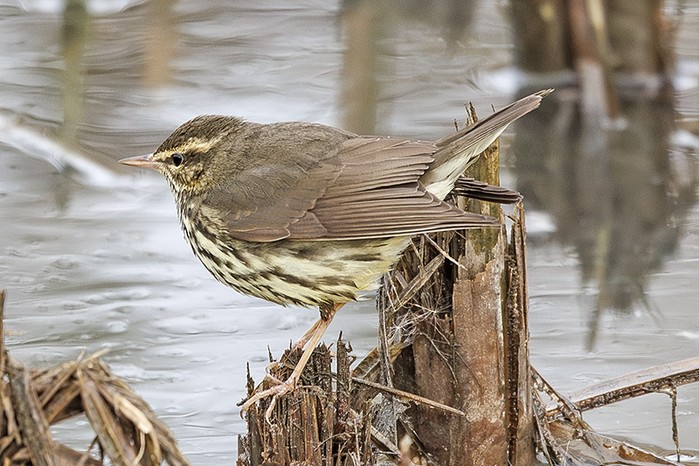
While the initial fervour to see the bird has died down somewhat, it continues to draw a steady stream of admirers to the area overlooking its own favoured steady stream. Understandably – with over a decade interval having elapsed since the last twitchable bird, it could easily be a long wait for our next.
Our perennial default seabird opener, the seemingly now resident Irish Double-crested Cormorant at Doon Lough (Co.Leitrim), put in another appearance this week on 16th.
Scotland meanwhile had a mega seabird all its own this week, with the discovery of a Pacific Diver at Burntisland (Fife) on 20th.
In East Sussex on 16th an unconfirmed report came of an immature Black-browed Albatross on the beach at Saltdean – the bird flew off and, with it, any chance of confirming whether or not Sussex had turned up another surprising stranded seabird. The county, after all, has form in this regard…
Fife Ness (Fife) had the best of the week’s Little Auks, with three seen from there on 20th; two were seen on 22nd off Pendeen (Cornwall). Single birds were noted on 18th at Sennen Cove (Cornwall) and South Gare (Cleveland); on 21st at Porthgwarra (Cornwall) and Troon (Ayrshire); and on 22nd off Maidens (Ayrshire).
Lastly, a probable Leach’s Petrel was seen from Plymouth’s Hoe Park (Devon) on 22nd.
To the long-legged beasties next, where numbers of Glossy Ibis held firm, with 26 birds noted, mainly in Britain – Ireland’s sole contribution this week being one again at Tacumshin (Co.Wexford) on 19th. In England, Dungeness (Kent) had the best gathering, of four birds, on 16th; Titchfield Haven NNR (Hampshire) retained three birds on 16th-22nd; three remained at Westhay Moor NNR (Somerset) on 16th-17th; and two were present at St Aidan’s RSPB (West Yorkshire) on 16th still.

In Cornwall the recently found juvenile Purple Heron remained in Langvan Valley (Cornwall) on 16th.
We’ll start the week’s honkers and quackers with The Goose Formerly Known As Canada, and a fair variety of their compelling kind was to be had. Starting with interior Todd’s Canada Goose, a bird was seen near Cardurnock (Cumbria) on 19th. Two hutchinsii Richardson’s Cackling Geese remained on Islay (Argyll & Bute) on 16th, while the recent individual remained at Lunt Meadows LWT (Lancashire & North Merseyside) on 17th. A single Cackling Goose was logged at Dunfanaghy New Lake (Co.Donegal) on 18th again, and a possible at Lough Neagh (Co.Armagh) on 20th.
In Lancashire & North Merseyside the Red-breasted Goose remained settled at Martin Mere WWT still until 20th. Elsewhere, Essex gave us both the first-winter still at Bradwell-on-Sea on 16th-20th, and an adult at Dengie on 18th; the first-winter was again seen in Norfolk at Cley NWT on 18th-22nd; the Northumbrian bird remained around Budle Bay on 16th-19th; and one was still on Islay (Argyll & Bute) on 16th.
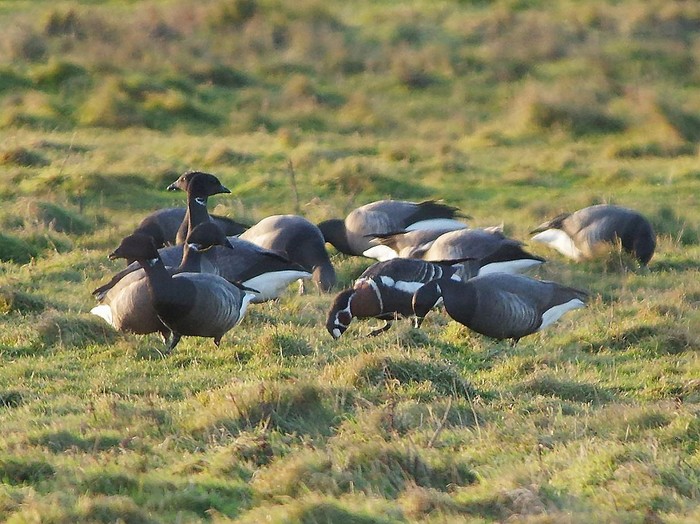
Bradwell-on-Sea (Essex) held onto the recent Black Brant on 20th; another was reported on 19th on the north Kent coast at Reculver.
Two adult Grey-bellied Brant were once more noted in Dublin (Co.Dublin) in the Raheny area on 20th.
In Scotland the white Snow Goose was again seen this week at Dingwall (Highland & Caithness) on 20th-22nd; and the North Uist (Western Isles) bird remained there on 22nd also.
The quackers begin once more with seaduck, specifically in Ireland where the juvenile female White-winged Scoter remained off Inishmore (Co.Galway) on 16th-19th; and the drake was still to be found off Inch (Co.Kerry) on 17th-18th.
Inch also boasted two Surf Scoter still on 17th-18th; further birds this week were logged at Gormanstown (Co.Meath), where two birds were again seen on 20th; in the Cockenzie area of Lothian still on 17th-21st; and off Holkham Gap (Norfolk), where the popular recent drake remained on 16th-20th.
In Lothian, a King Eider was found off Port Seton on 21st.
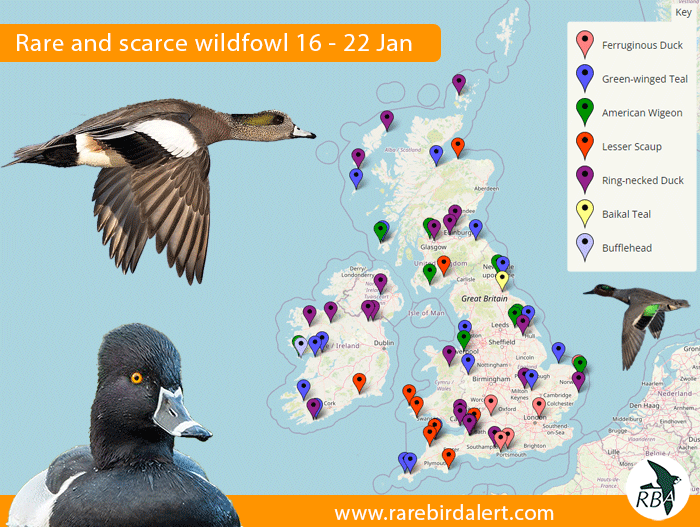
Back to Inishmore (Co.Galway), where the drake Bufflehead was still present on the island on 16th; and the drake American Wigeon also still there on 16th-19th.
Additional American Wigeon were seen this week at Big Waters NR (Northumberland) on 16th-21st; Newshot Island (Clyde) still on 17th-21st; at Crook of Baldoon RSPB (Dumfries & Galloway) on 16th-22nd still; on Islay (Argyll & Bute) on 17th; at North Duffield Carrs (East Yorkshire) on 18th; at Loch Spynie (Moray) still on 21st; in Cheshire & Wirral at Burton Mere Wetlands RSPB on 22nd; and a possible at Breydon Water (Norfolk) on 16th.
In Co.Durham, the first-winter drake Baikal Teal continued to prove a steadfast presence at Bishop Middleham on 16th-19th.
Numbers of Green-winged Teal held firm in recent days, with 17 birds seen over the course of the week. Barra (Western Isles) held two birds on 16th, while singletons were noted at Hayle Estuary RSPB (Cornwall) still on 16th-22nd; Grafham Water (Cambridgeshire) still on 16th-22nd; Lunt Meadows LWT (Lancashire & North Merseyside) on 16th-21st still; Rahasane Turlough (Co.Galway) on 16th-20th; Yelland (Devon) on 17th-18th still; on Islay (Argyll & Bute) on 18th; at Stithians Reservoir (Cornwall) on 18th-21st; at Killarney (Co.Kerry) again on 19th; at Alturlie Point (Highland & Caithness) on 19th-20th; at Whiteadder Reservoir (Lothian) on 19th-20th; at Rosscarbery (Co.Cork) on 20th; at Polemere (Shropshire) on 20th-22nd; on 21st at Holkham Freshmarsh (Norfolk); on 21st-22nd at Howdon Wetland NR (Northumberland); and on 22nd at Bell Harbour (Co.Clare).
The week was notable for sightings of Ferruginous Duck, not least the drake that turned up in Snaresbrook (London) on Eagle Pond on 19th-22nd, a good London bird; and a drake seen coming off the sea in Hampshire at Pennington Marshes on 19th, followed by presumably the same bird at Titchfield Haven NNR on 20th-22nd. In Norfolk, two remained at Filby Broad until 19th at least.
The week proved to be a strong one for Ring-necked Ducks, courtesy in no small part to Lough Gara (Co.Sligo), where an impressive seven birds were seen on 20th. A shade over 25 birds were noted in Britain and Ireland as a whole, with a few more sites accounting for multiple birds – three at Shapwick Heath NNR (Somerset) on 20th; two still at Lisvane Reservoir (Glamorgan) on 16th-22nd; and two at Loch of Harray (Orkney) on 20th.
Lesser Scaup also made it into double figures again this week – Lower Tamar Lakes (Devon / Cornwall) held five birds still on 16th-22nd, with six logged there on 18th; one remained at Slapton Ley (Devon) on 18th-21st; the drake was still at Chew Valley Lake (Somerset) on 19th; in Pembrokeshire, both recent birds remained at Penberry Reservoir on 18th-21st and Bosherston Lily Ponds on 16th-19th; and the drake was still on Knockaderry Reservoir (Co.Waterford) on 19th. On 22nd an unconfirmed report came of an additional two birds at Loch Spynie (Moray).
Finally, we head back to Inishmore (Co.Galway) for our honorary wildfowl – the Pied-billed Grebe was still settled there on 16th-19th.
In Ireland, Co.Wexford continued to supply American Golden Plover this week around North Slob WWR on 16th-17th.
Somerset’s regular wintering Kentish Plover was again seen at Burnham-on-Sea on 21st.
A Dotterel was found on 22nd at Lisselan (Co.Waterford).
Co.Wexford supplied a Long-billed Dowitcher this week, still present at Tacumshin on 16th; another was at Dungarvan (Co.Waterford) on 16th also; and, in East Sussex, the wintering bird remained at Cuckmere Haven on 18th-22nd.
Recent Lesser Yellowlegs were still to be seen this week in East Yorkshire at Swine Moor on 20th-21st; in Lincolnshire at Frampton Marsh RSPB on 17th-22nd; and in Suffolk at Blythburgh again on 16th and 20th.
A Grey Phalarope was found on 22nd off Mount Batten (Devon).
Sightings of first-winter Bonaparte’s Gull came again from Cornwall on 16th at Hayle Estuary RSPB and Marazion, and then on 21st at Maer Lake CBWPS; an adult was seen briefly at Brora (Highland & Caithness) on 20th and again there the following day; and the adult was again seen at Ballygalley Castle Hotel (Co. Antrim) on 21st.
Five Ring-billed Gulls were seen in recent days, three of which were in Ireland – one at Blackrock (Co.Louth) on 19th still; another at Blennerville (Co.Kerry) on 19th; and one at Ring (Co.Cork) still on 19th. British individuals remained at Hayle Estuary RSPB (Cornwall) on 17th-22nd, and at Strathclyde Loch (Clyde) on 16th-17th.
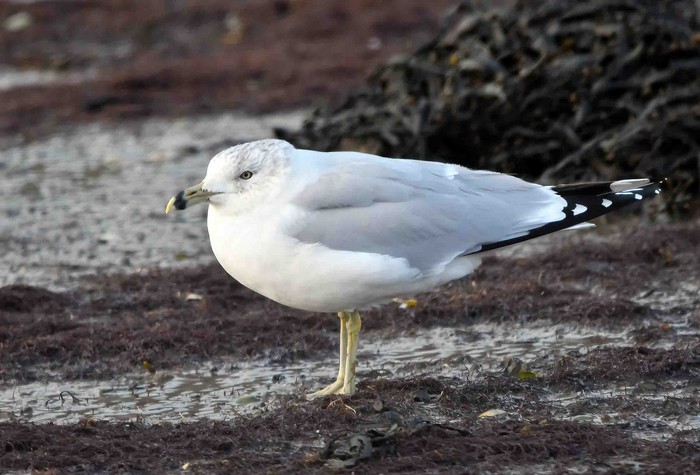
Numbers of white-wingers were somewhat subdued, with around 30 Glaucous Gulls and 30 Iceland Gulls noted across Britain and Ireland. Very few sites managed more than a singleton of either species – Westray (Orkney) enjoying the best of the slim pickings, with half a dozen Glaucous Gulls logged there on 20th rising to seven birds on 21st; and, for Iceland Gulls, we had Loch of Spiggie (Shetland) on 22nd to thank for a gathering of five birds.
A few Kumlien’s Gulls cropped up this week – one at Blennerville (Co.Kerry) on 16th again; one present on Unst (Shetland) on 20th-22nd; the adult again at Helmsdale (Highland & Caithness) on 22nd; and a Cornish sighting at Mousehole on 20th.
It was all about the harriers again this week, foremost of which was the reappearance of the juvenile Northern Harrier once more at Tacumshin (Co.Wexford) on 17th.
As for Pallid Harriers, the usual suspects were still available. In Norfolk the second-winter female continued to waft around the Warham Greens area on 16th-22nd. In Wales meanwhile sightings came once more on 18th from National Wetlands Centre WWT (Carmarthenshire) and Llanrhidian Marsh (Glamorgan); then, on 19th, at Castlemartin Corse (Pembrokeshire) again; and finally, on 22nd, back at National Wetlands Centre, Pen-clawdd (Glamorhan), and Llanrhidian Marsh.
A possible Rough-legged Buzzard was seen at Holkham Freshmarsh (Norfolk) on 21st.
Chief amongst the decidedly scarce passerine pickings this week was the adult male Black-throated Thrush still sitting pretty in East Yorkshire at Tophill Low NR on 16th-21st.
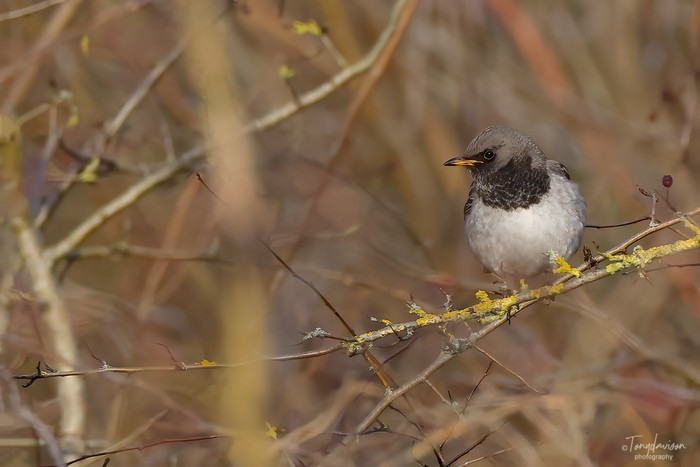
Kent meanwhile generated a couple of Hoopoe reports in recent days – in Ashford on 17th, and on Romney Marsh at New Romney Main Sewer on 18th.
Sticking with the colourful a moment, Waxwings continued to delight nationwide, and haven’t exhausted the berries on offer in municipal planting schemes and shopping centre carparks just yet.
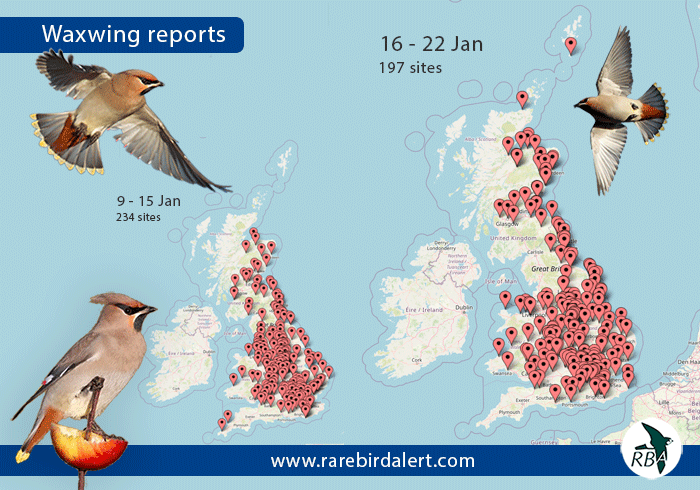
Great Grey Shrikes were ever harder to come by in what’s already a poor winter for their kind. The Derbyshire bird remained on Ramsley Moor on 16th-19th; the Powys bird was once again seen at Dyfnant Forest on 19th; and the Tomintoul (Moray) bird again on 21st-22nd.
In Cornwall, the Yellow-browed Warbler remained at Treen on 21st.
Our only Richard’s Pipit sighting this week was the bird still hanging around The Lizard (Cornwall) on 16th-20th.

Finches gave us a handful of tantalising reports – one of a probable exilipes Arctic Redpoll at Minsmere RSPB (Suffolk) on 19th; another of a singing Serin in Hertfordshire at Stocker’s Lake on 16th; and still another unconfirmed report of 10 Parrot Crossbill in Woolmer Forest (Hampshire) on 20th.
Finally, at least one Little Bunting remained in Cornwall at Tremethick Cross on 17th.
Much of the week’s overseas news came from far afield. Starting in Cape Verde, the Lesser Moorhen remained on Sal on 18th…
…while in Israel a Red-wattled Lapwing was to be seen in Hula Valley on 16th.
On the Azores, the Double-crested Cormorant remained on Faial on 22nd.
Finally, much closer to home, in the Netherlands the japonicus Siberian Buff-bellied Pipit continued to winter at Polder Groot on 18th.
We closed last week’s Rarity Round Up, writing in the teeth of ferocious northerlies, with a hopeful prediction of a white wanderer from the High Arctic – something like an Ivory Gull was a not totally unreasonable punt for the coming week.
And, to a point, we called it correctly. We just got the scale of the creature in question vastly wrong…
This week Shetland’s played host to a most obliging Beluga, favouring a small and mostly sheltered bay in the northwest of Mainland near Hillswick. Found on 17th, its arrival coincided with the start of a sustained and persistent period of heavy snowfall across Shetland, unusually right down to sea level. For a while roads were passable only with great care in four wheel drive vehicles and, even then, the local police were advising residents to remain at home and not attempt to travel.
Amazing to see this Beluga of the Shetland coast today with Rebecca Nason @puffinpassion #Shetland pic.twitter.com/pwYHAFifuD
— Richard Shucksmith (@ImagesEcology) January 17, 2024
Shetland’s home to a very active and engaged cetacean watching community, and their patience with this Arctic weather was to be rewarded, as the great white whale remained in its favoured bay until 21st at least – weather and hence viewing conditions being unfavourable as the week drew to an end on 22nd.
Excuse the shaky video- wind picked up a fair bit. But what a magnificent beast! Thankful it stuck around until the roads had cleared. Beluga whale- a stunning animal in a beautiful setting. @NatureInShet pic.twitter.com/tjo1UULRWU
— Kevin Kelly (@KevinKelkenny) January 20, 2024
Time will tell whether it’s hanging around beyond Storm Isha’s tenure in the isles… This is only the sixth record of its kind for Shetland and, of course, records of Beluga become significantly rarer further south in Britain.
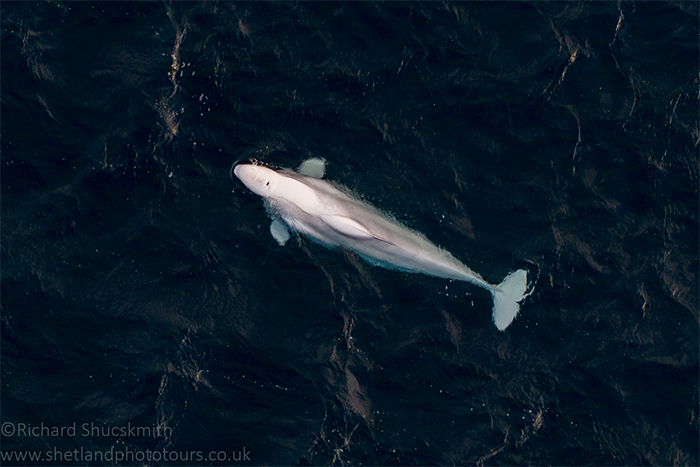
We’re heading into the final week of January, 2024 already having done itself proud in Britain and Ireland alike… but could the first month of the year spring one final surprise upon us yet?
History certainly says so. We need only look to Kent for what, even viewed with the benefit of decades of hindsight, still stands out as one of the most remarkable birding events within living memory – the discovery of what was, back then, the Western Palearctic’s first ever record of Golden-winged Warbler at Larkfield on 24th January 1989. There’s only been one since, on the Azores in 2012. Will we ever see another fully across the Atlantic?
That’s maybe just too big an ask, even for this perennially optimistic section of proceedings. The coming week does provide another golden hint from the not-so-distant past – a Myrtle Warbler found on 26th January 2014 at High Shincliffe (Co.Durham). Both of these warblers went on to provide stays that stretched into weeks, rather like the current Northern Waterthrush in Essex.
So, in the wake of that epic autumn of 2023, and with such auspicious precedents for the coming week, let’s keep our fingers crossed something else Nearctic is found in the coming week. The RSPB’s Big Garden Birdwatch is upon us, so maybe there will be an email heading to the good folks at Sandy someday soon with a photo of a ‘funny-looking bird’ in somebody’s garden…
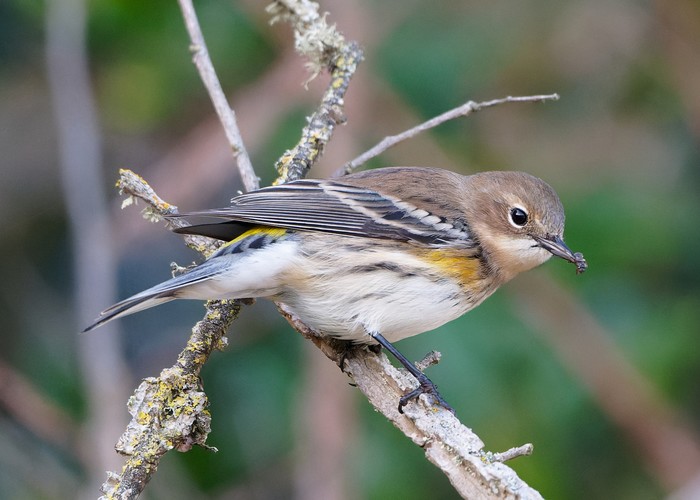
Jon Dunn
Many thanks to all this week's contributors for your photos and videos
Share





